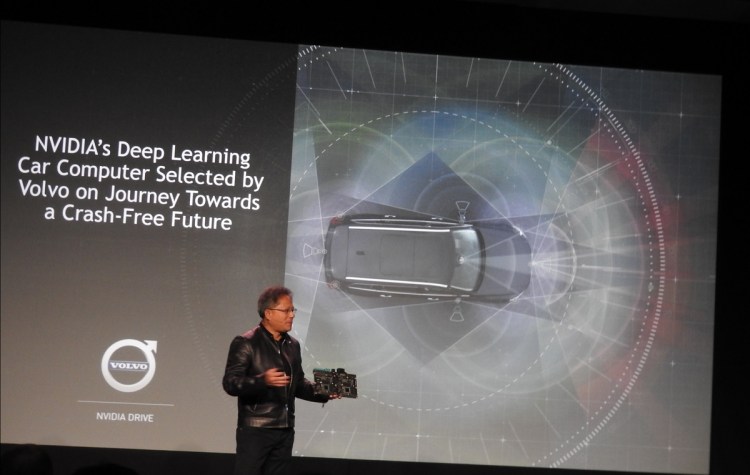Volvo will purchase several hundred Nvidia Drive PX 2 car supercomputers as part of an effort to develop self-driving cars.
Jen-Hsun Huang, CEO of graphics chipmaker Nvidia, revealed the news at the company’s press conference on the eve of the 2016 International CES (the big tech trade show in Las Vegas this week).
The new PX 2 supercomputer uses a Nvidia Pascal graphics processing unit (GPU) and has 12 central processing units, or CPUs. The supercomputer can handle eight teraflops.
Huang said the supercomputer will lead to safer driving, new mobility services, and the redesign of urban architecture.
“Our vision is to create the computing platform by which we can achieve these goals,” he said. “The car is paying attention all of the time. It is a virtual copilot that will keep you out of harm’s way.”
A year ago, Nvidia unveiled its original PX supercomputer for the car. The new PX 2 is the computational equivalent of 150 Macbook Pros and is about the size of a lunch box. It can process 2,800 images per second, and is built with a 16-nanometer manufacturing process, compared to 28nm for Nvidia’s earlier Titan X.
Huang said that the PX2 can be used in conjunction with a deep-learning platform that Nvidia is creating. It is building a network that can learn how to decipher images car cameras collect as they drive down the road. The self-driving car has to identify threats on the road, such as pedestrians, and alert the car and the driver to the hazard. The network can learn to identify such hazards, and will get better with time.
Volvo can make use of this kind of network as it trains its PX 2-based cars to recognize threats and drive themselves.
VentureBeat's mission is to be a digital town square for technical decision-makers to gain knowledge about transformative enterprise technology and transact. Learn More

